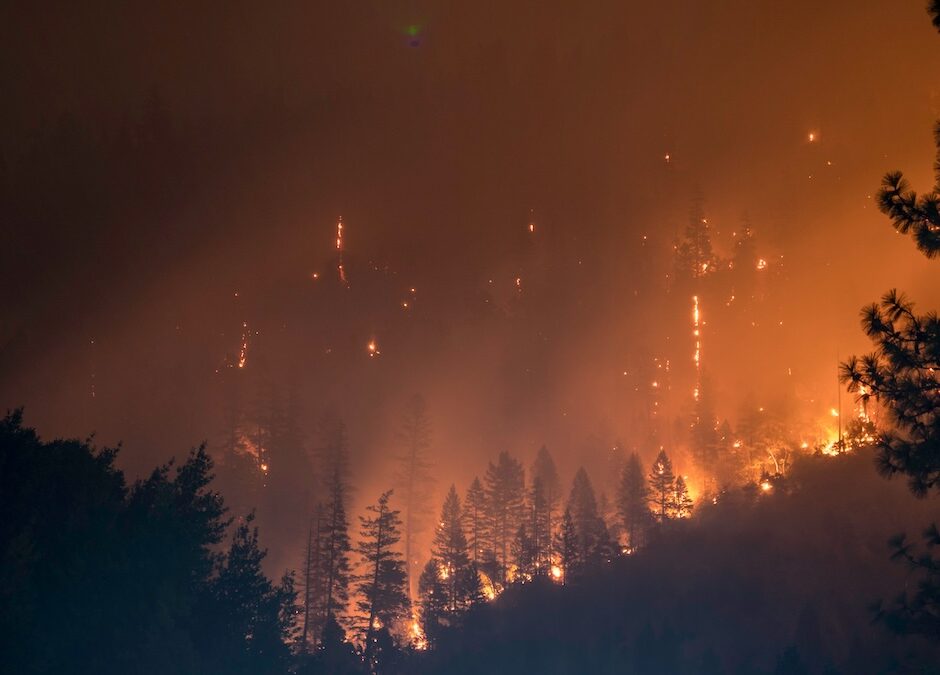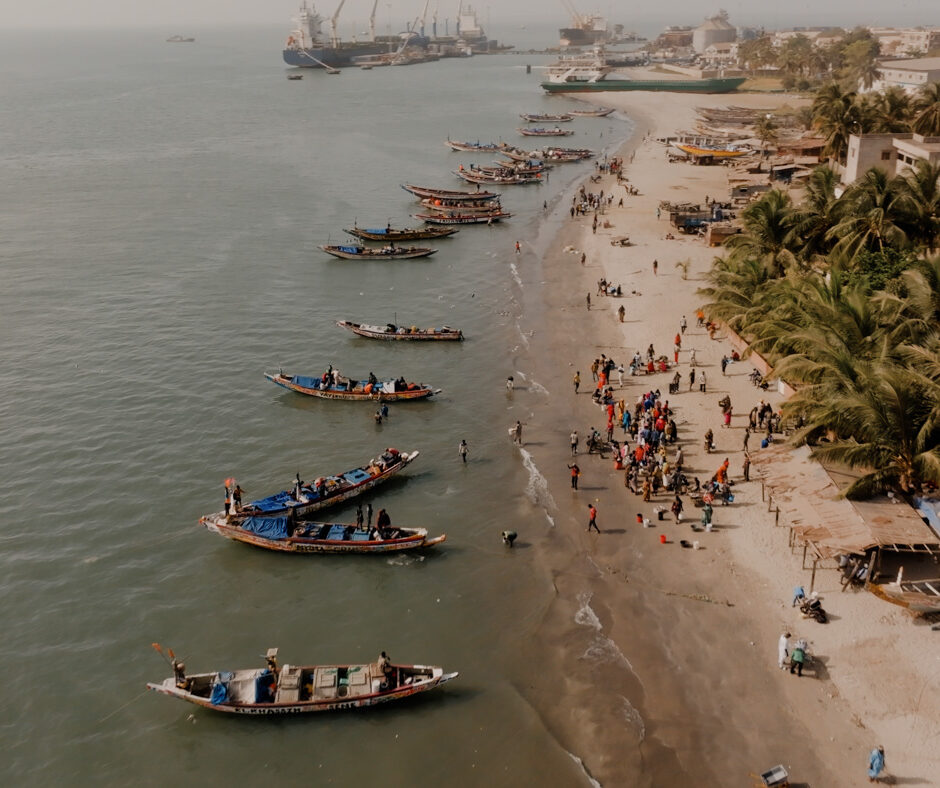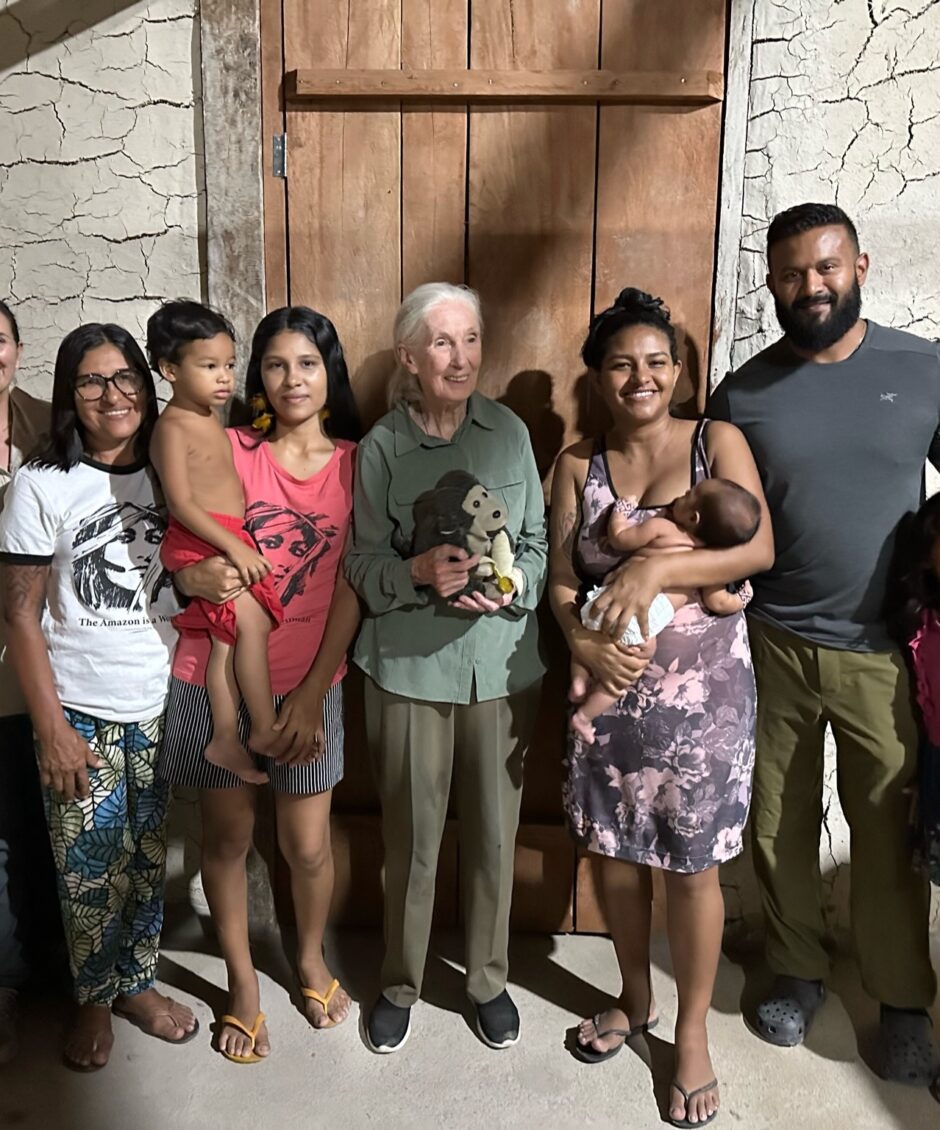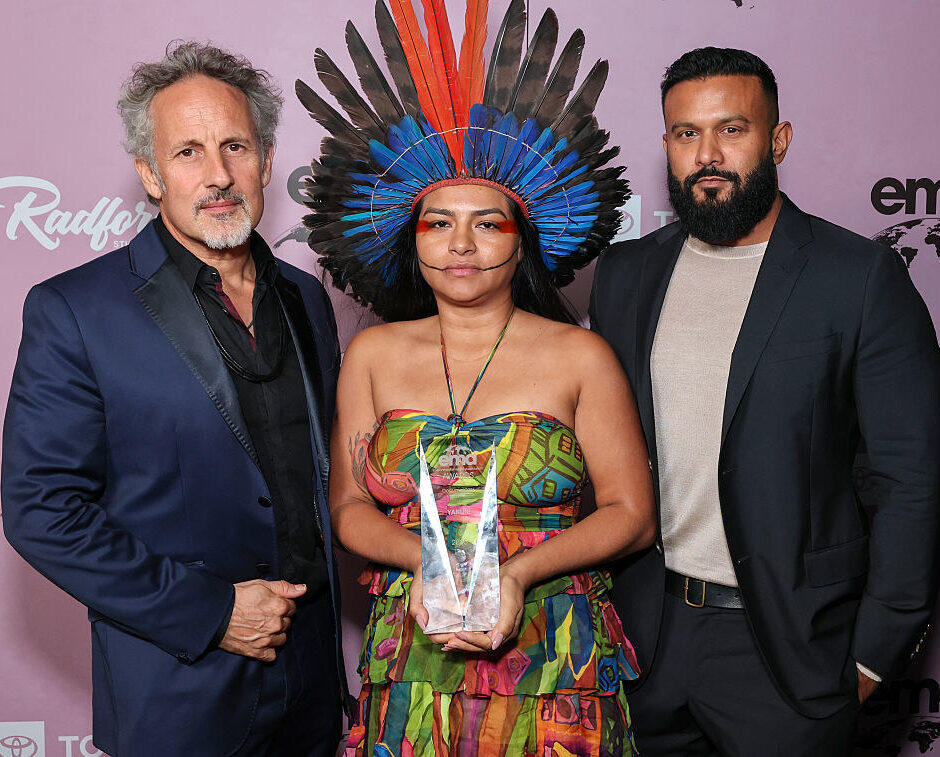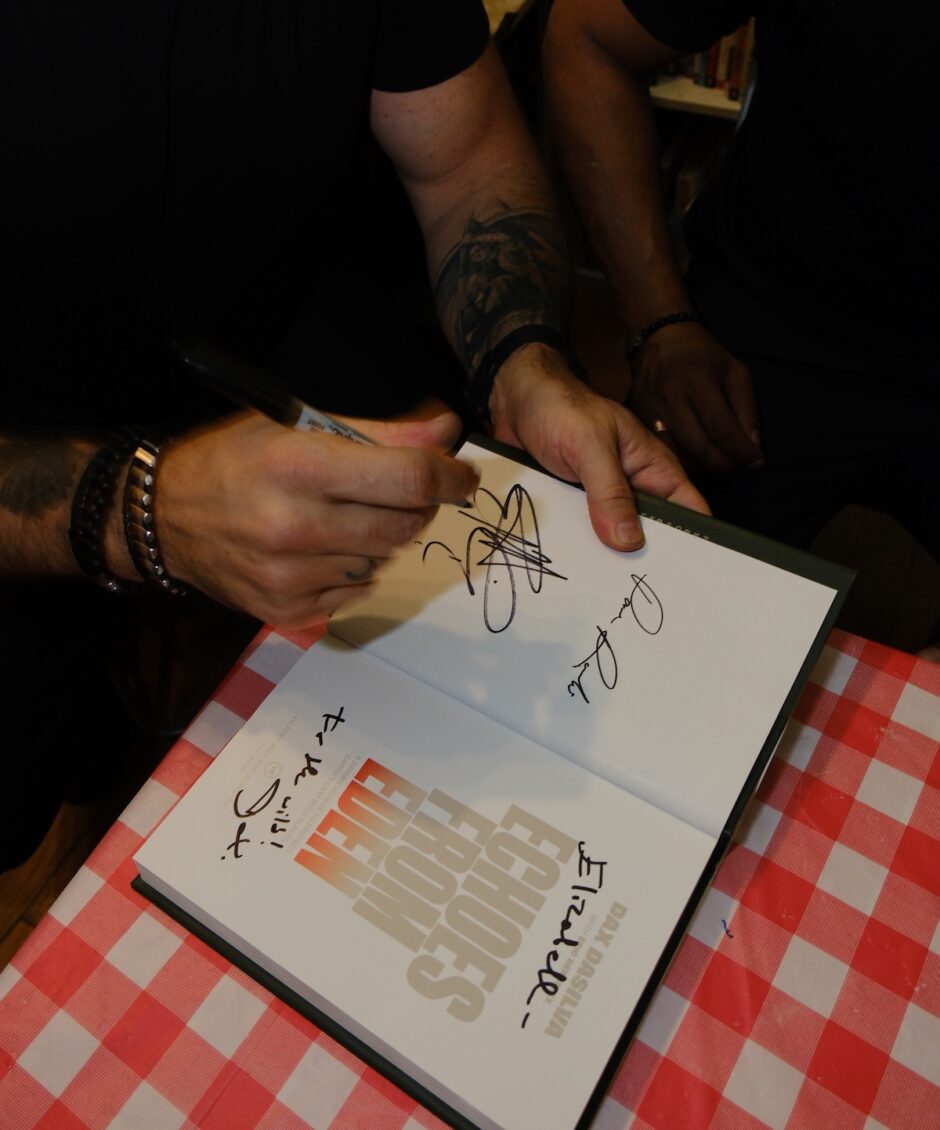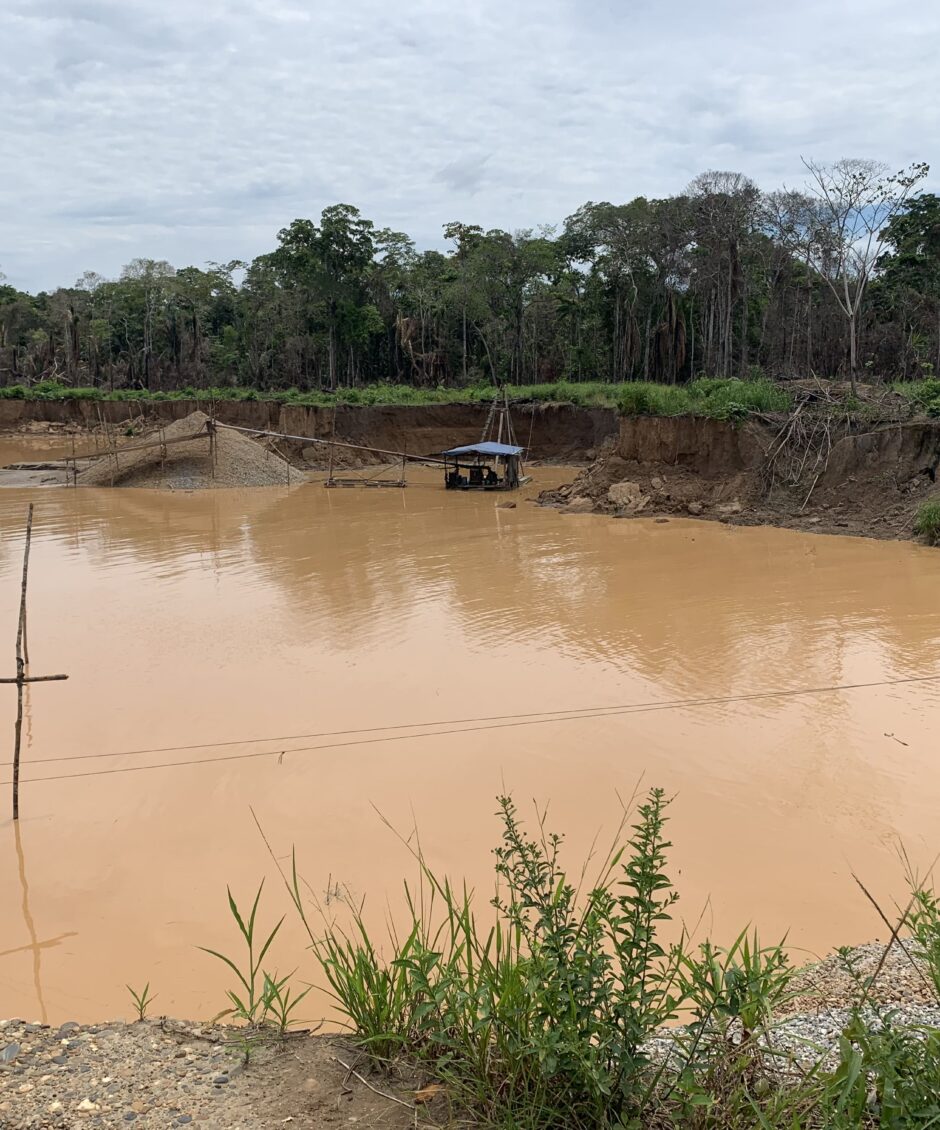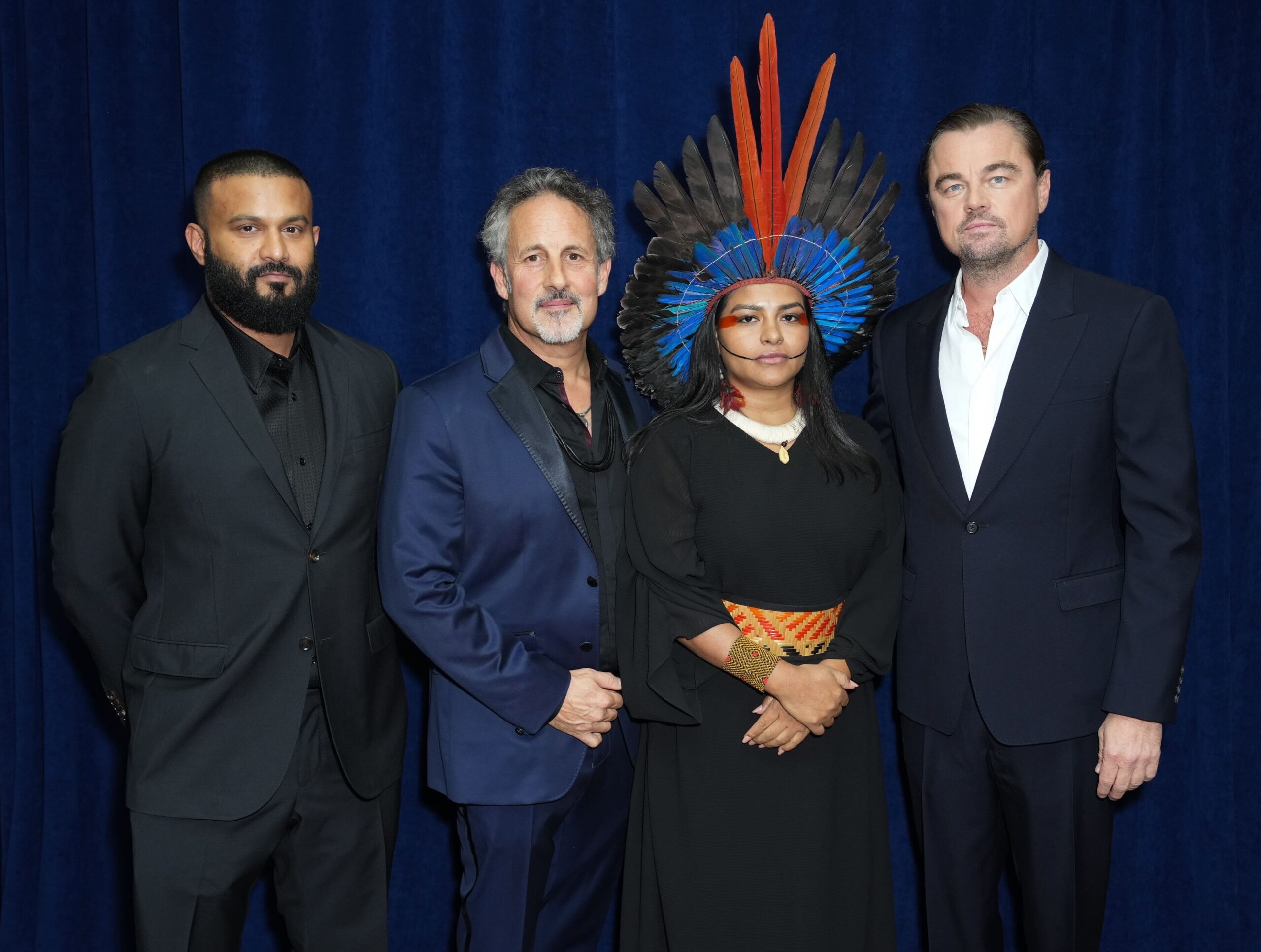The Fight to Protect a Vanishing Amazon Turtle
Article
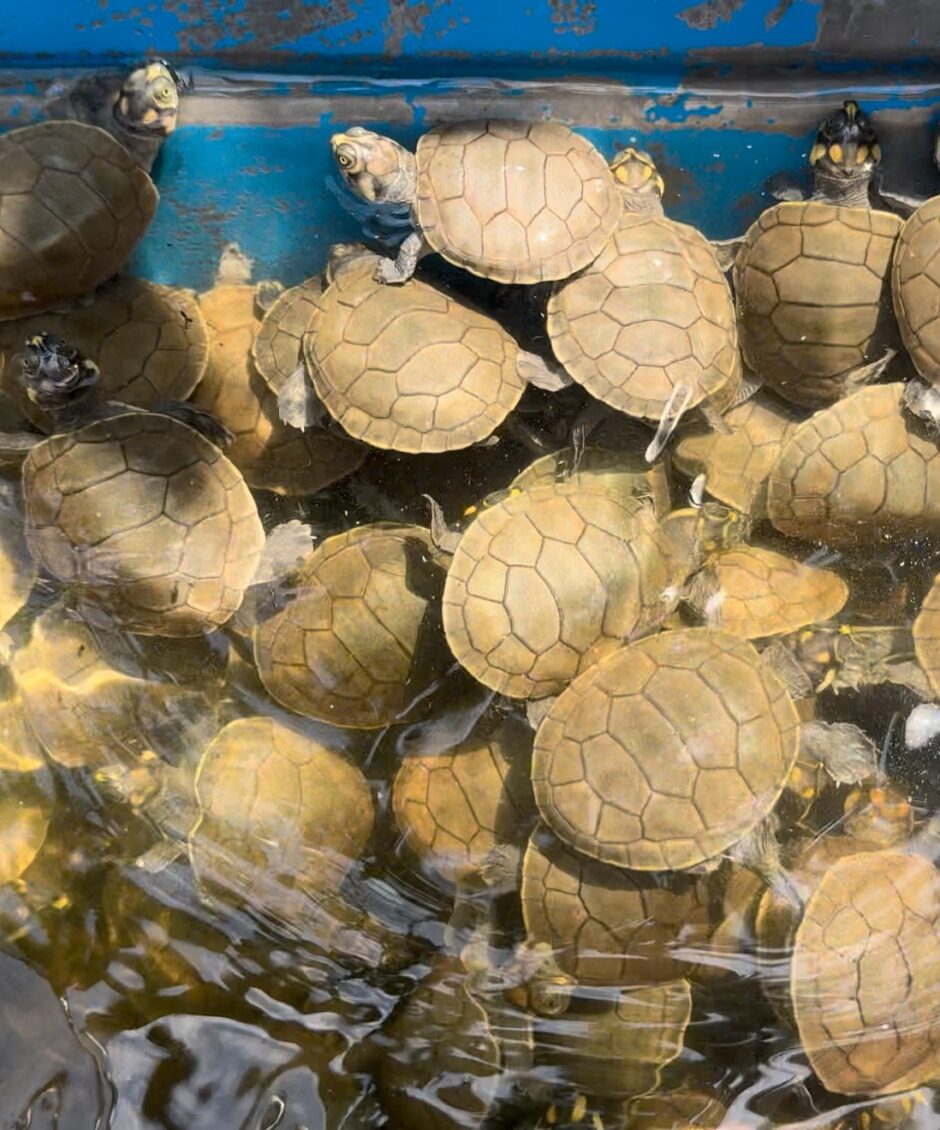
Junglekeepers founder Paul Rosolie reports from the Amazon on efforts to save the endangered Taricaya turtle from poaching and habitat loss through community-led conservation.
Author
Paul Rosolie
Topics
Along the tributaries of the Amazon River, not far from where the rainforest breaks into floodplain, you’ll spot a curious scene: rows of small turtles resting on sun-bleached logs, eyes half-closed in the sun. Look closer, and you’ll see butterflies clinging gently to their heads, lapping salt from the moisture around their eyes.
These are Taricaya turtles, or Podocnemis unifilis, one of the Amazon’s most visible but increasingly vulnerable species. Known for their smooth, hydrodynamic shells and webbed feet, they have become a symbol of the shrinking boundary between wilderness and human reach.
But that peaceful moment on the river’s surface hides a deeper story. The Taricaya is now listed as vulnerable by the International Union for Conservation of Nature (IUCN), and also included in Appendix II of CITES. Although they remain common across much of the Amazon and Orinoco basins, growing pressure from poaching, river traffic, and habitat disruption has pushed many local populations to the brink.
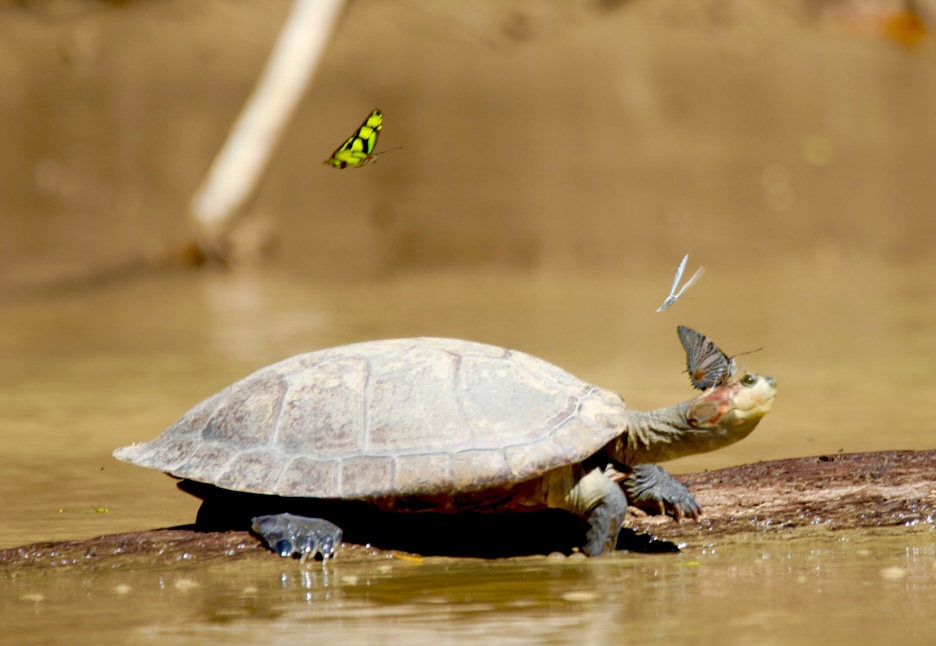
The Tracks That Give Them Away
Every dry season, when the riverbanks widen and the sandbars dry out, female Taricaya turtles haul themselves onto the shore to lay eggs. The trail they leave—a center drag flanked by symmetrical footprints—is easy to spot, even from a distance. Boats filled with Brazil nut harvesters or fishers can trace these tracks straight to the nests.
And that’s the problem. Human poachers are now the most efficient predators of Taricaya eggs. Where natural threats like birds, crabs, and reptiles thin out the weak, people often strip entire nests clean in one visit.
According to a 2018 study, nest poaching rates dropped by more than 75% in communities that implemented local monitoring programs and conservation incentives. Still, where no protection exists, harvesting continues at unsustainable levels.
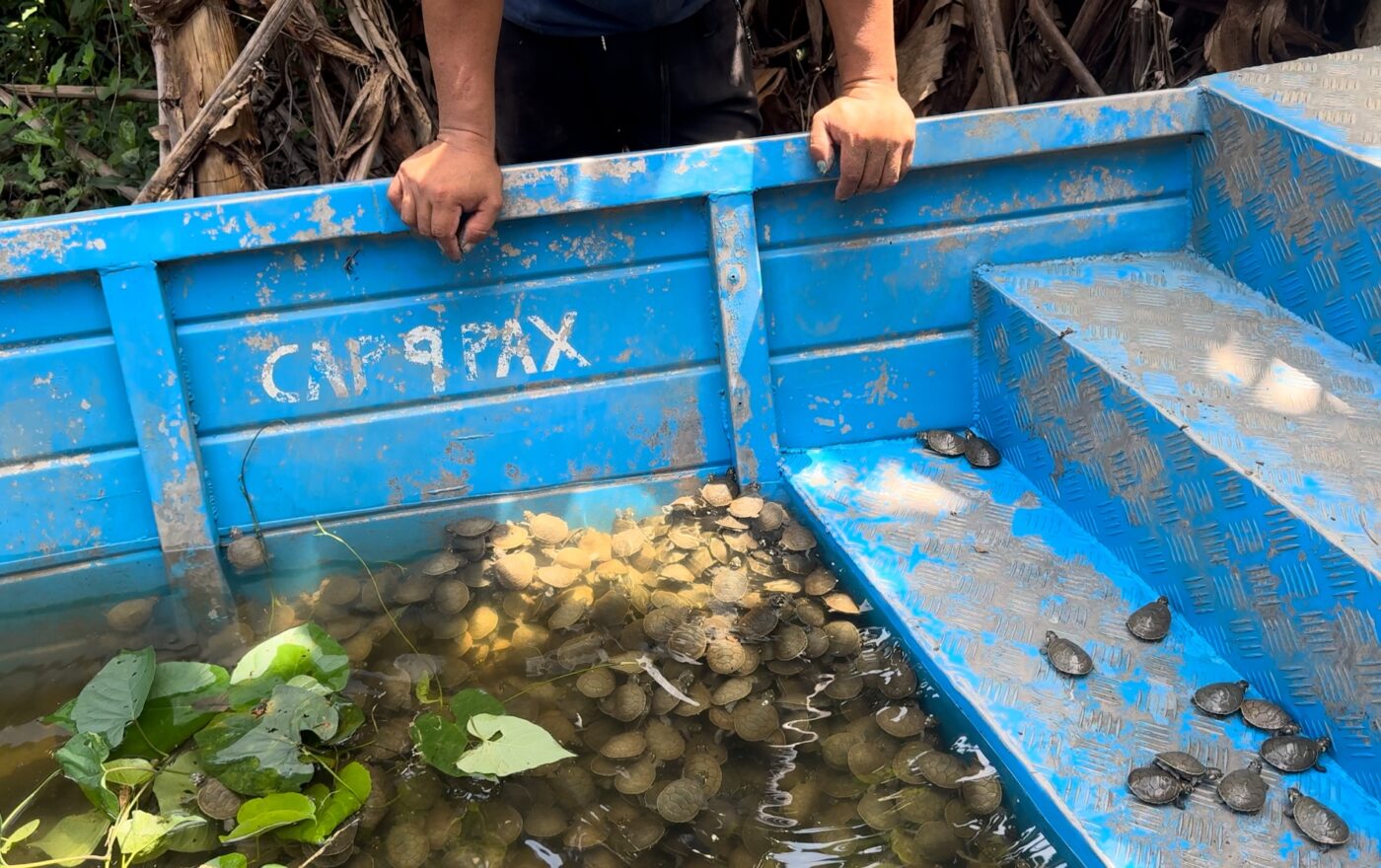
A Ground-Up Response
At Junglekeepers, we’ve taken direct action. Rangers now patrol the river daily, especially during nesting season. This presence alone deters many opportunists. But last year, our team began building artificial nesting sites just beside the central ranger station. Constructed from sand collected from the riverbanks, these enclosures are used to house and monitor eggs relocated from high-risk areas.
The controlled setup allows rangers to monitor nests around the clock. Once the eggs hatch, the turtles are released back into the wild at night, when predation risk is lowest.
Photos show the results clearly: hundreds of hatchlings clustered in an old boat repurposed as a nursery. It’s a makeshift system, but it works.
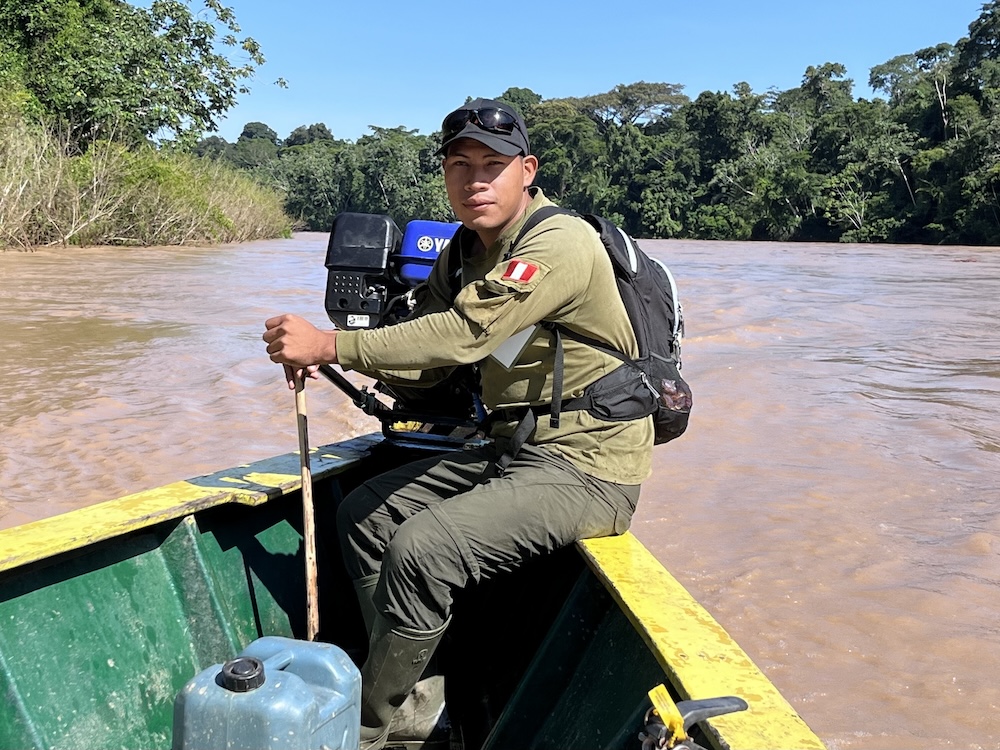
A Network of Efforts
Taricaya conservation isn’t confined to the Peruvian Amazon. In Trinidad, the nonprofit Nature Seekers, supported by Age of Union, has been working for decades to protect leatherback turtles using a community-based model. Age of Union backs this and similar efforts through direct funding and storytelling, highlighting how frontline action can scale through networks of committed local actors.
Globally, more than 300 turtle species exist, many of which are endangered. The Taricaya’s fate echoes that of many other freshwater and marine turtles: long-lived, slow to reproduce, and highly vulnerable to human disturbance.
At Junglekeepers, we believe protecting these species is not just about numbers. It’s about maintaining the integrity of a river system where each creature plays a role. When you see a Taricaya turtle with a butterfly on its face, you are witnessing something fragile. That fragility is what drives our work.
Because the goal is not only to protect wildlife, but to protect the possibility of encounters like these for generations to come.
Credits
Photos courtesy of Paul Rosolie
Topics
Article written by
Paul Rosolie
Paul Rosolie is an American conservationist and author. He is also the founder and field director of Junglekeepers. His 2014 memoir "Mother of God" details his experiences working in the Amazon rainforest in southeastern Peru.
Related
articles
America, Asia, News
What More Intense Wildfire Seasons Mean For People and the Planet
Africa, Project
Inside the Fight to Protect Gambian Artisanal Fishermen and Biodiversity From Industrialized Fishing
News, Project, South America
Age of Union Announces USD $287,000 Commitment to The Juma Institute for New Knowledge Centre and Amazon Rainforest Protection
Project
More articles
News
Age of Union Marks 4 Years of Global Conservation Wins As COP30 Commences in Brazil
News, Other
‘Echoes from Eden’ Book Tour Connects Readers to Urgent Stories of Conservation
Explainer, South America
In the Amazon, Gold Mining Leaves a Toxic Trail
America, Asia, News
What More Intense Wildfire Seasons Mean For People and the Planet
Film

